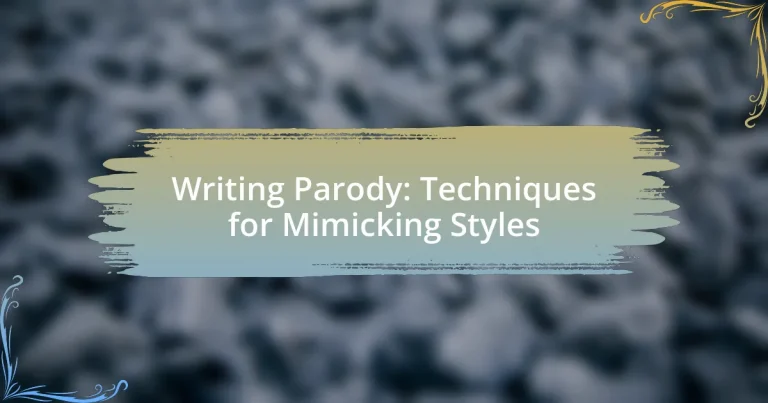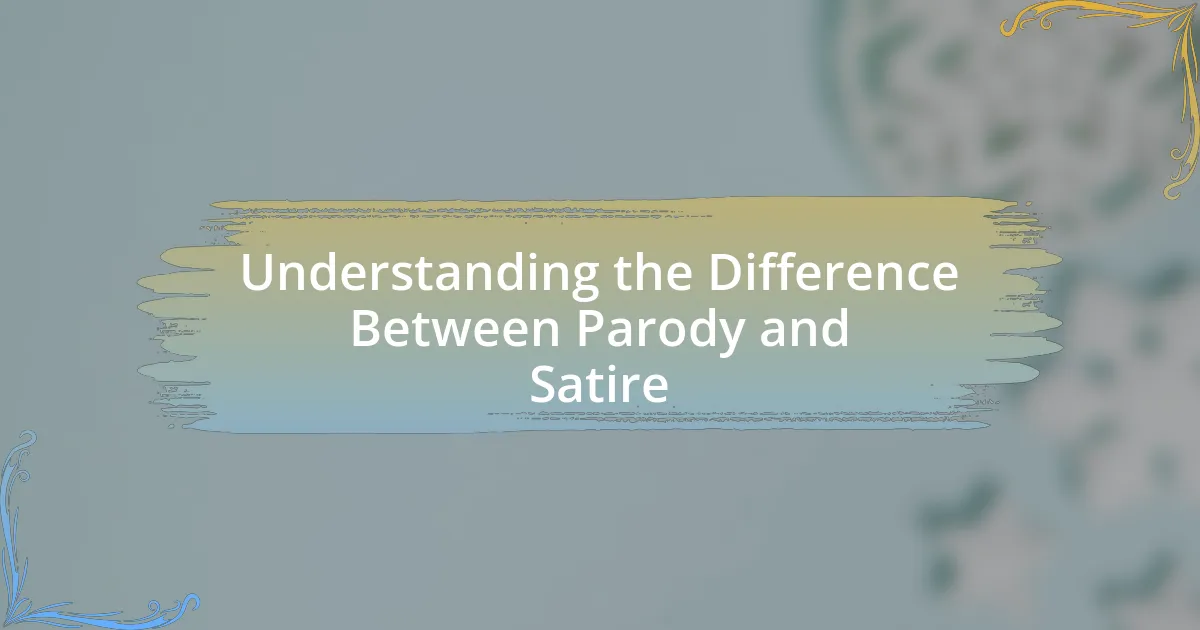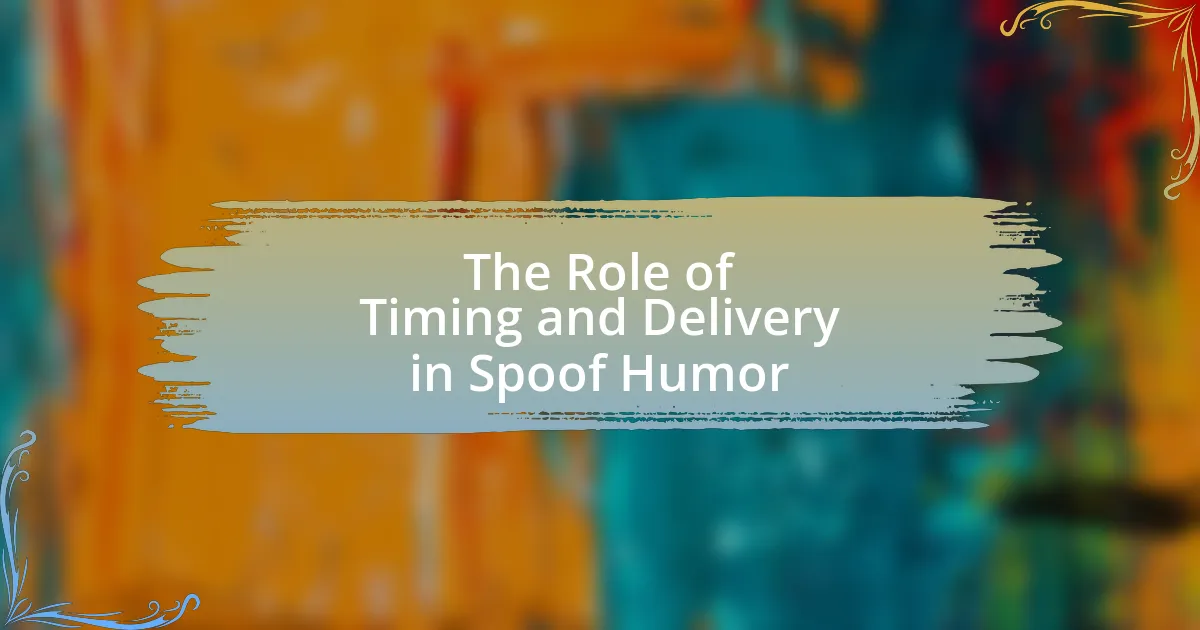Writing parody is a literary technique that imitates the style of a specific genre, author, or work, often for comedic effect or critique. This article explores the characteristics of parody writing, its distinction from other forms of humor like satire and spoof, and its significance in literature and culture. Key techniques for effective parody, such as exaggeration and imitation of style, are discussed, along with practical tips for writers to enhance their parody skills. Additionally, the article addresses common pitfalls in parody writing and offers strategies to avoid unintentional offense while maintaining humor and clarity.
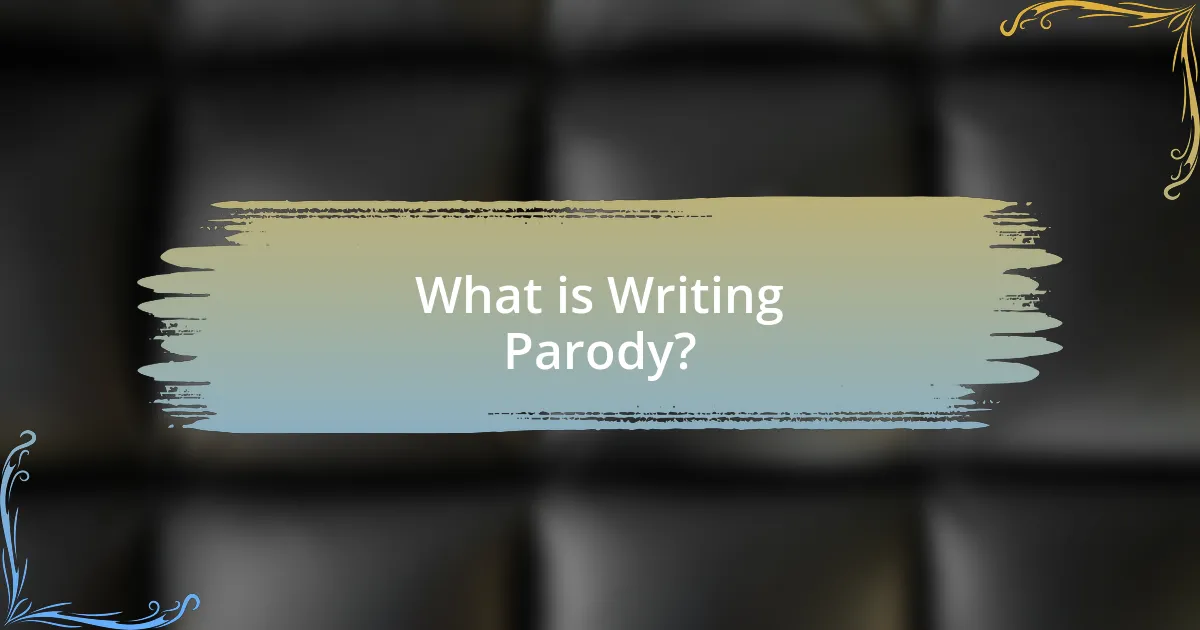
What is Writing Parody?
Writing parody is a literary technique that imitates the style of a particular genre, author, or work, often for comedic effect or critique. This form of writing exaggerates characteristics and conventions of the original to highlight its flaws or absurdities, making it recognizable yet distinct. For example, works like “Don Quixote” by Miguel de Cervantes serve as early examples of parody, as they mock the chivalric romances of the time. Parody can also be seen in modern media, such as “The Onion,” which satirizes news articles by mimicking their structure while presenting absurd content.
How does writing parody differ from other forms of humor?
Writing parody differs from other forms of humor by specifically imitating the style and conventions of a particular work or genre to create comedic effect. Parody relies on exaggeration and distortion of recognizable elements, allowing audiences to appreciate the original context while finding humor in the absurdity of the imitation. For example, works like “The Onion” or “Weird Al” Yankovic’s song parodies highlight this technique by transforming familiar content into something humorous through clever mimicry. This distinct approach sets parody apart from other humor forms, such as satire, which critiques societal issues without necessarily imitating a specific style.
What are the key characteristics of parody writing?
Parody writing is characterized by its humorous imitation of a particular style, genre, or work, often exaggerating its features for comedic effect. This form of writing typically employs satire, which critiques the original subject while entertaining the audience. Key characteristics include the use of recognizable tropes, a playful tone, and a focus on absurdity, which highlights the flaws or clichés of the original work. For example, works like “Don Quixote” by Miguel de Cervantes serve as early examples of parody, as they mock the chivalric romances of their time.
How does parody relate to satire and spoof?
Parody, satire, and spoof are all forms of comedic expression that critique or mimic other works, but they differ in their intent and execution. Parody specifically imitates the style of a particular work or genre to create humor, often highlighting its flaws or absurdities. In contrast, satire aims to expose and criticize societal issues or human vices through humor, often using exaggeration and irony. Spoof, while similar to parody, typically focuses on a lighthearted imitation of a genre or work, often for comedic effect without the deeper critique found in satire. For example, “Scary Movie” serves as a spoof of horror films, while “The Colbert Report” employs satire to comment on political issues, and “Weird Al” Yankovic’s songs parody popular music by mimicking their style while adding humorous twists.
Why is writing parody important in literature and culture?
Writing parody is important in literature and culture because it serves as a tool for social critique and reflection. Parody allows authors to mimic and exaggerate the styles, themes, or conventions of existing works, thereby highlighting their absurdities or flaws. For instance, works like “Don Quixote” by Miguel de Cervantes and “The Onion” in contemporary media demonstrate how parody can challenge societal norms and provoke thought. This form of writing not only entertains but also encourages audiences to question and analyze the original subjects, fostering a deeper understanding of cultural contexts and literary traditions.
What role does parody play in social commentary?
Parody serves as a critical tool in social commentary by using humor and exaggeration to highlight societal issues and norms. Through imitation of styles, parody exposes the absurdities and contradictions within cultural practices, prompting audiences to reflect on their beliefs and behaviors. For instance, television shows like “Saturday Night Live” utilize parody to critique political figures and social trends, effectively engaging viewers in discussions about governance and societal values. This method not only entertains but also encourages critical thinking, making parody a powerful vehicle for social critique.
How can parody influence public perception of original works?
Parody can significantly influence public perception of original works by providing a humorous or critical lens through which audiences can reevaluate the source material. This reinterpretation often highlights flaws, inconsistencies, or cultural contexts that may have been overlooked, prompting audiences to engage with the original work in a new way. For example, the parody “Scary Movie” critiques and exaggerates tropes from horror films, leading viewers to question the conventions of the genre and their own consumption of it. Such parodic interpretations can shift public opinion, making the original works appear either more trivial or more profound, depending on the nature of the parody.
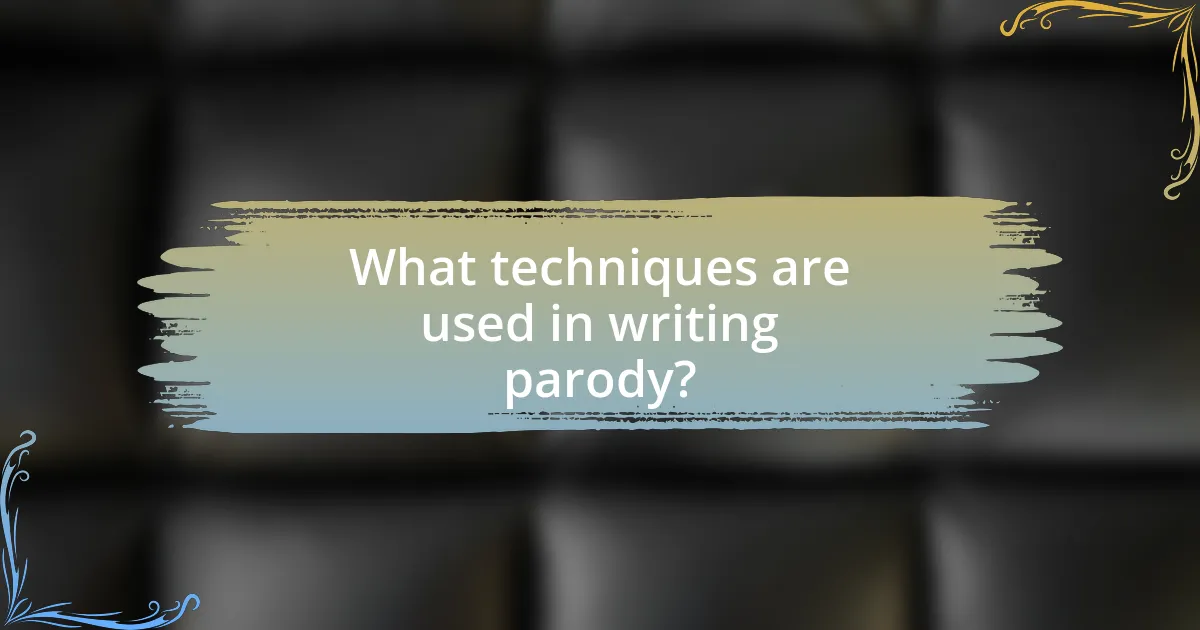
What techniques are used in writing parody?
Parody writing employs several techniques to mimic and satirize the original work. Key techniques include exaggeration, where elements of the original are amplified to absurdity; imitation of style, which involves closely replicating the tone, structure, and language of the source material; and juxtaposition, where contrasting elements are placed side by side to highlight differences or absurdities. Additionally, parody often utilizes irony and humor to critique the original work, making it both entertaining and thought-provoking. These techniques are effective in creating a recognizable yet altered version of the original, allowing audiences to appreciate the humor while reflecting on the source material.
How can writers effectively mimic styles in parody?
Writers can effectively mimic styles in parody by closely analyzing the original work’s tone, structure, and language. This involves identifying key elements such as the author’s unique voice, recurring themes, and stylistic devices like metaphors or similes. For instance, in parodying a specific author, a writer might exaggerate their characteristic phrases or plot devices to create humor while maintaining recognizable features of the original style. Research indicates that successful parodists often employ techniques like hyperbole and irony, which enhance the comedic effect while still paying homage to the source material.
What are the common stylistic elements to imitate?
Common stylistic elements to imitate in writing parody include tone, diction, syntax, and imagery. Tone refers to the attitude conveyed in the text, which can be humorous, sarcastic, or exaggerated to reflect the original work’s essence. Diction involves the choice of words, where mimicking the specific vocabulary and phrasing of the original author enhances authenticity. Syntax pertains to the structure of sentences, including the use of rhythm and punctuation, which can be altered to create a comedic effect. Imagery involves the descriptive language that evokes visual representations, often exaggerated or twisted to highlight absurdities. These elements are essential for effectively capturing and satirizing the original style, making the parody recognizable and engaging.
How does tone contribute to the effectiveness of a parody?
Tone significantly enhances the effectiveness of a parody by establishing the emotional context and guiding audience interpretation. A well-defined tone, whether satirical, humorous, or critical, allows the parody to resonate with the audience, making the underlying message clearer. For instance, a light-hearted tone can make a parody more accessible, while a biting tone can emphasize the absurdity of the original work. Research indicates that tone influences audience engagement and comprehension, as seen in studies on humor and satire, which demonstrate that tone shapes how effectively the audience perceives the parody’s critique.
What are the different types of parody?
The different types of parody include literary parody, musical parody, film parody, and visual parody. Literary parody mimics the style of a specific author or genre, often exaggerating characteristics for comedic effect, as seen in works like “Pride and Prejudice and Zombies.” Musical parody involves altering lyrics of popular songs to create humorous versions, exemplified by “Weird Al” Yankovic’s songs. Film parody satirizes specific movies or genres, such as “Scary Movie,” which parodies horror films. Visual parody uses images or artwork to imitate and mock existing styles, often found in cartoons or memes. Each type serves to critique or entertain by highlighting the original work’s conventions.
How does literary parody differ from film or music parody?
Literary parody differs from film or music parody primarily in its medium and techniques of expression. Literary parody utilizes written language to mimic and exaggerate the style, themes, or characters of a specific literary work or genre, often relying on wordplay, narrative structure, and character development to create humor or critique. In contrast, film and music parody leverage visual and auditory elements, such as cinematography, sound, and performance, to achieve a similar effect, often incorporating visual gags, musical alterations, or exaggerated acting to convey their message. The effectiveness of literary parody is rooted in its ability to engage readers’ imaginations through text, while film and music parody engage audiences through sensory experiences.
What are some famous examples of successful parodies?
Famous examples of successful parodies include “Weird Al” Yankovic’s music parodies, such as “Eat It,” which humorously mimics Michael Jackson’s “Beat It,” and the film “Scary Movie,” which parodies the horror genre, particularly the “Scream” franchise. Additionally, the television show “Saturday Night Live” is known for its political and cultural parodies, effectively satirizing public figures and events. These examples demonstrate the effectiveness of parody in entertainment, as they often achieve commercial success and critical acclaim, highlighting the art of mimicking styles for comedic effect.
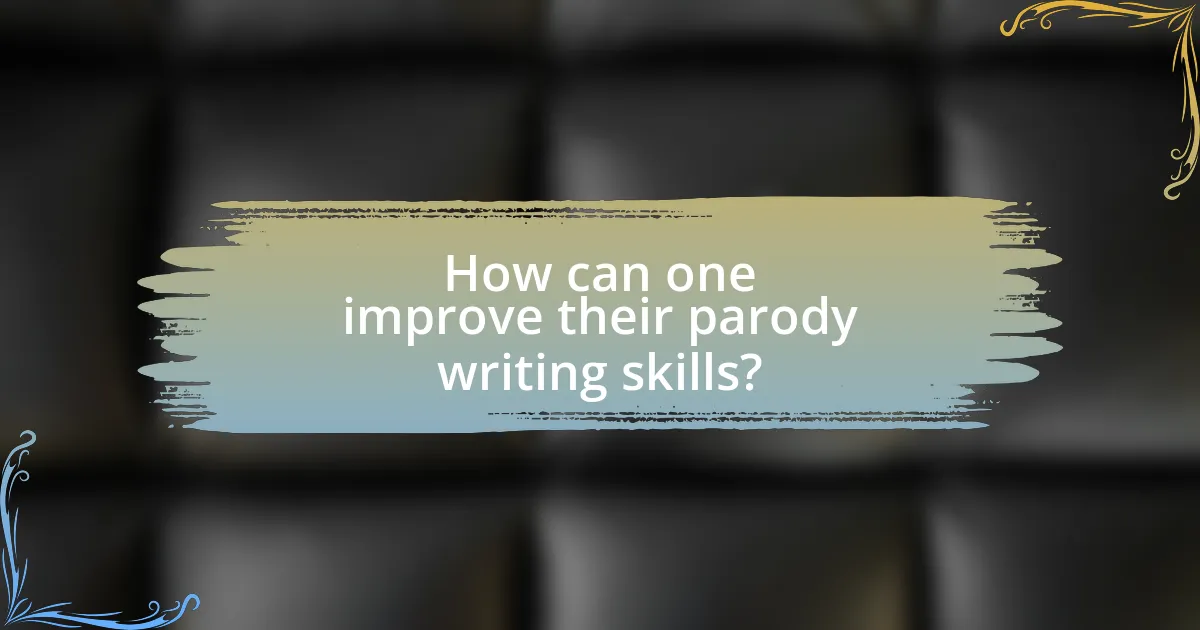
How can one improve their parody writing skills?
To improve parody writing skills, one should practice analyzing and mimicking the style of original works. This involves closely studying the structure, tone, and themes of the source material to effectively capture its essence while adding a humorous twist. Engaging in regular writing exercises that focus on different genres or styles can enhance versatility and creativity. Additionally, seeking feedback from peers or participating in writing workshops can provide valuable insights and help refine one’s approach. Research indicates that writers who actively engage with diverse texts and receive constructive criticism tend to develop stronger parody skills, as they learn to identify and exaggerate key elements effectively.
What exercises can help develop parody writing techniques?
To develop parody writing techniques, writers can engage in exercises such as rewriting a well-known scene from a book or movie in a humorous or exaggerated style. This exercise helps in understanding the original tone and structure while allowing for creative reinterpretation. Additionally, analyzing and mimicking the style of established parody writers, such as Douglas Adams or P.G. Wodehouse, can provide insights into effective techniques. Practicing these methods enhances a writer’s ability to identify and exaggerate the quirks of the original material, which is essential for successful parody.
How can reading and analyzing parodies enhance writing skills?
Reading and analyzing parodies can significantly enhance writing skills by providing insights into style, structure, and humor. Parodies often mimic the conventions of original works, allowing writers to understand how to manipulate language and form for comedic or critical effect. This practice sharpens a writer’s ability to identify and replicate various writing styles, which is essential for developing versatility in their own writing. Furthermore, engaging with parodies encourages critical thinking about the original texts, fostering a deeper understanding of narrative techniques and character development. By dissecting the elements that make a parody effective, writers can apply these techniques to their own work, improving their overall writing proficiency.
What role does feedback play in refining parody writing?
Feedback is essential in refining parody writing as it provides critical insights into the effectiveness of humor, style, and cultural references. Through constructive criticism, writers can identify areas where their parody may fall flat or fail to resonate with the intended audience. For instance, feedback can highlight whether the satire effectively captures the essence of the original work, ensuring that the parody remains relatable and engaging. Additionally, studies in creative writing emphasize that peer reviews and audience reactions significantly enhance a writer’s ability to fine-tune their voice and comedic timing, ultimately leading to a more polished and impactful parody.
What are some common pitfalls in writing parody?
Common pitfalls in writing parody include failing to understand the source material, which can lead to ineffective humor, and relying too heavily on clichés, which diminishes originality. Additionally, parodies often suffer from a lack of clarity in their intent, making it difficult for the audience to discern the satire. Misjudging the tone can also alienate the audience, as overly harsh or mean-spirited parodies may not resonate well. Lastly, neglecting to provide context can leave the audience confused, as they may not grasp the references being made. These pitfalls can undermine the effectiveness of the parody and reduce its impact.
How can writers avoid unintentional offense in their parodies?
Writers can avoid unintentional offense in their parodies by being mindful of the cultural and social contexts they are referencing. Understanding the backgrounds and sensitivities of the subjects being parodied helps prevent misinterpretation and offense. For instance, research indicates that humor can be perceived differently across cultures, and what is funny in one context may be offensive in another. By conducting thorough research on the subjects and ensuring that the parody does not perpetuate harmful stereotypes or mock marginalized groups, writers can create humor that is both respectful and entertaining.
What mistakes should be avoided to maintain humor and clarity?
To maintain humor and clarity in writing parody, avoid overcomplicating language and references. Simplifying language ensures that the humor is accessible, while clear references help the audience understand the context. For instance, using straightforward vocabulary rather than jargon allows for immediate comprehension, which is essential in comedic writing. Additionally, excessive or obscure references can alienate readers, making it difficult for them to grasp the intended humor. Research indicates that clarity enhances audience engagement, as seen in studies on effective communication in humor, which show that simpler structures lead to better retention and enjoyment.
What practical tips can enhance your parody writing?
To enhance your parody writing, focus on understanding the original work’s style and themes. Analyzing the source material allows you to identify key elements such as tone, character traits, and plot devices that can be exaggerated or twisted for comedic effect. For instance, studying classic parodies like “The Onion” or “Saturday Night Live” reveals how they effectively mimic and satirize current events or popular culture by amplifying absurdities. Additionally, incorporating clever wordplay and puns can elevate the humor, as seen in works by authors like Douglas Adams, who skillfully blend wit with parody.
